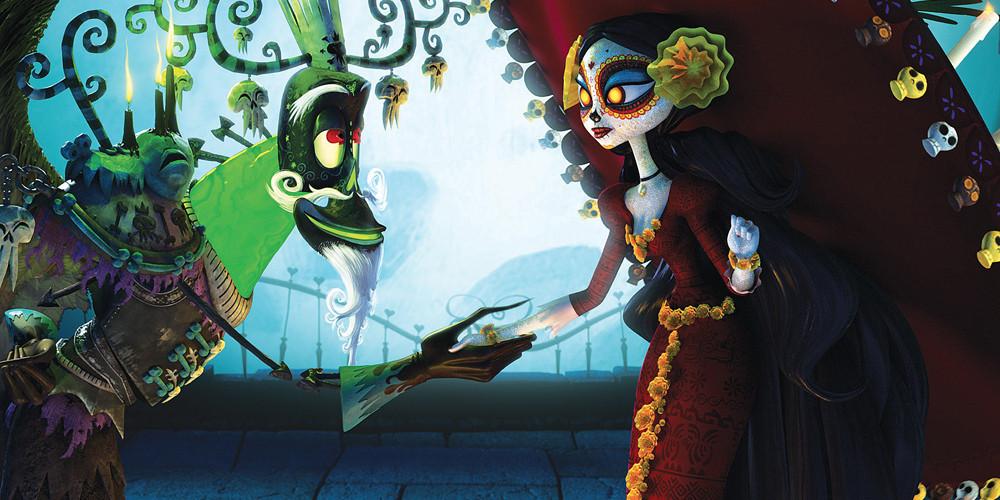
4 minute read
LATINX/HISPANIC CULTURE REPRESENTED IN KIDS ANIMATION MOVIES
B Y : A I S H U S E N T H I L
“Children are the living messages we send to a time we will not see.” ~ Neil Postman
Advertisement
Culture—an important aspect of our lives. It can be witnessed in everything we do, everything we think, and everything we see. Our world is full of diverse cultures, and it is important to spread the knowledge of these cultures as much as possible in order to keep them all alive. One effective way of doing this is by movies. And what better way to ensure that the future of our cultures are intact than by creating cultural awareness in children? After all, as Neil Postman’s quote suggests, children are the future.
Latinx and Hispanic people are the largest ethnic minority group in the US. Their culture is an important influence on American history, and in order to maintain this legacy, it is important that people, particularly children, recognize this culture. The traditions of Latinx and Hispanic people have recently been brought to light by children’s movies. One popular movie that reflects this culture is Coco. This Disney film, released in 2017, has many cultural aspects binded into its imaginative, adventurous story. For example, the movie, featuring all Mexican characters, takes place on Dia de los Muertos, the famous Latinx/Hispanic festival. The beliefs and traditions that encircle this celebration, like the belief of the Land of the Dead and decorating altars in the memory of those who have passed on, are illustrated throughout the film. However, there are also more cultural connections that may not be noticed at first sight. An example would be the winged jaguar, portrayed as
Imelda’s spirit animal Pepita. This colourful creature that is believed to be of Oaxacan origin, along with many others portrayed throughout the film, are known as alebrijes. They rise from the fantastical folk traditions of Mexican culture, but they are not related to the Dia de los Muertos festival. Created by Pedro Linares Lopez (a paper mache artist) in the 1930s, these creatures are a mix of a variety of different animals, and can be distinguished by their unique vibrant mix of colours. Another example would be the songs dotted throughout the film. The film heavily revolves around its amazing soundtrack, and the songs expertly mimic the Mexican style. La Llorona, one of the featured songs in the movie, is based on the myth of the wailing ghost of a woman who is said to be searching near water bodies for her lost children. This folk tale is intended to discipline children with the threat of being captured by La Llorona to make up for her lost children, and this prominent aspect of Mexican culture has become a well molded reference in the film. Everything in this movie, from the costumes to the setting to the songs, and even the easteregg tributes to famous Mexican celebrities such as Frida Kahlo and El Santo, has some sort of cultural influence. These kinds of references to different aspects of the culture enrich the movie and make it more relatable to the Latinx/Hispanic audience. Pepita the spirit animal from Coco: an example of an alebrijea

The Book of Life, an animated movie released in 2014, is another notable mention that is bathed in Mexican culture. This movie is very similar to Coco, and represents many identical cultural aspects throughout the course of its story. However, one key feature of the story that is not included in Coco is the idea of La Muerte, the ruler of the Land of the Remembered, a place where the community of dead people who were remembered by their living family and friends lived. La Muerte, who is one of the main characters of the movie, is described as a kind and just ruler who cares for the remembered and the living.
The story also goes into great detail about the Land of the Forgotten, a place where the dead who were forgotten by their living relatives went. Their ruler, Xibalba, is also one of the main characters of the film, described as a sneaky and sly ruler. As can be deduced from the portrayal of the remembered versus the forgotten, Latinx/Hispanic people consider being remembered as proof of having lived a good life, comparable to the idea of Heaven, whereas being forgotten is considered a terrible thing, a punishment that one must suffer for the eternity of the afterlife.
Xibalba and La Muerte, as seen in the film The Book of Lifeg

Both these movies provide a good context to those who are new to Mexican culture, but more importantly, they give latinx/hispanic children a story that they can relate to more. These stories are what the future of our planet is growing up with, and making Latinx/Hispanic movies allows children around the world to show the appreciation for these unique and diverse cultures that they deserve. Children’s animated movies are taking a step towards the greater good by implementing more of this culture into their stories. They are not only making movies rich in latinx and hispanic culture, but also adding diversity to any movie in general by adding a latin or hispanic character. Try looking yourself, you will be surprised by how common these characters have become in movies and TV shows. The list of latin/hispanic characters is extremely long, possibly even endless. This just goes to show that the cinema world is beginning to give Latin and Hispanic cultures the righteous appreciation they deserve. Soon, the whole world will too.









